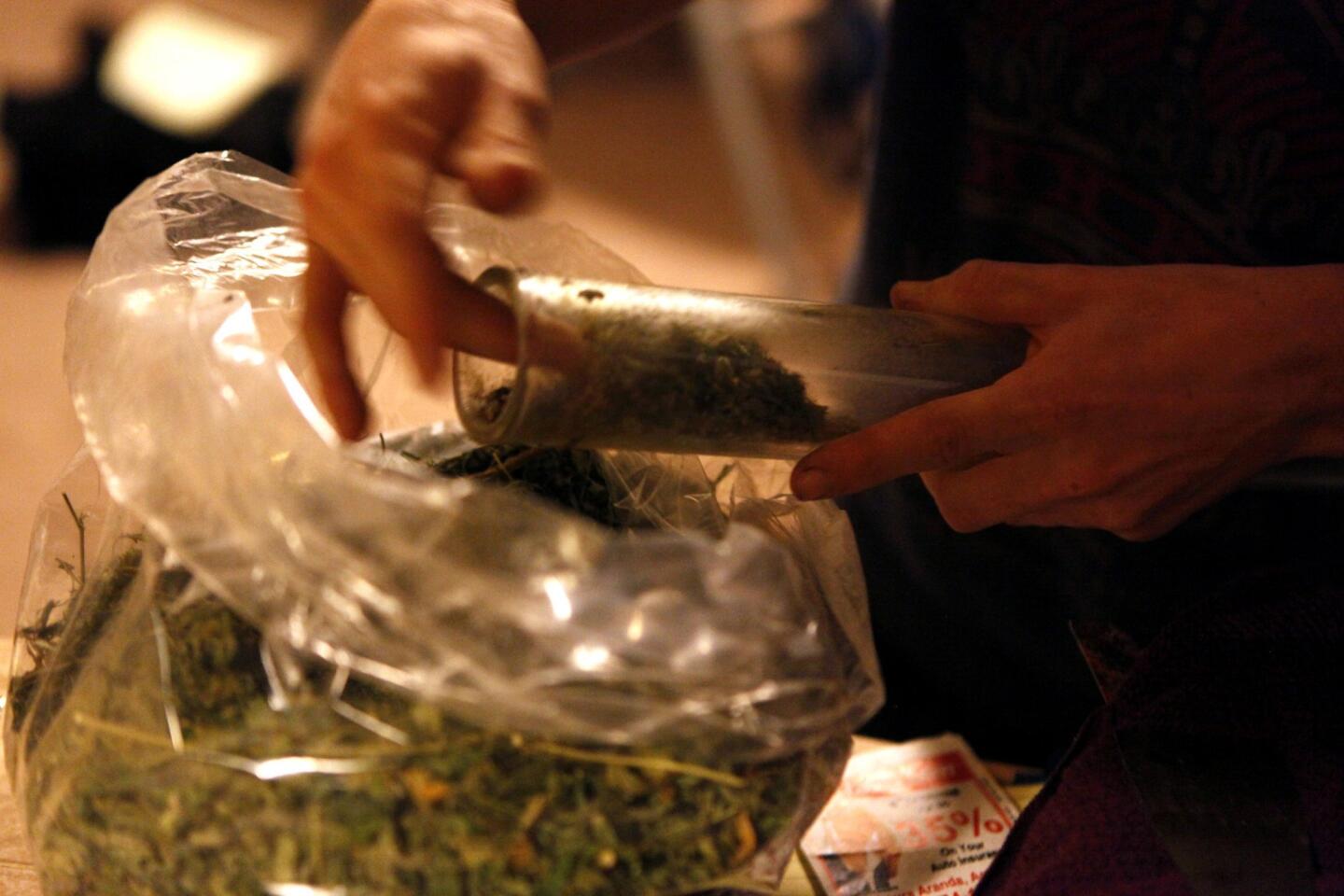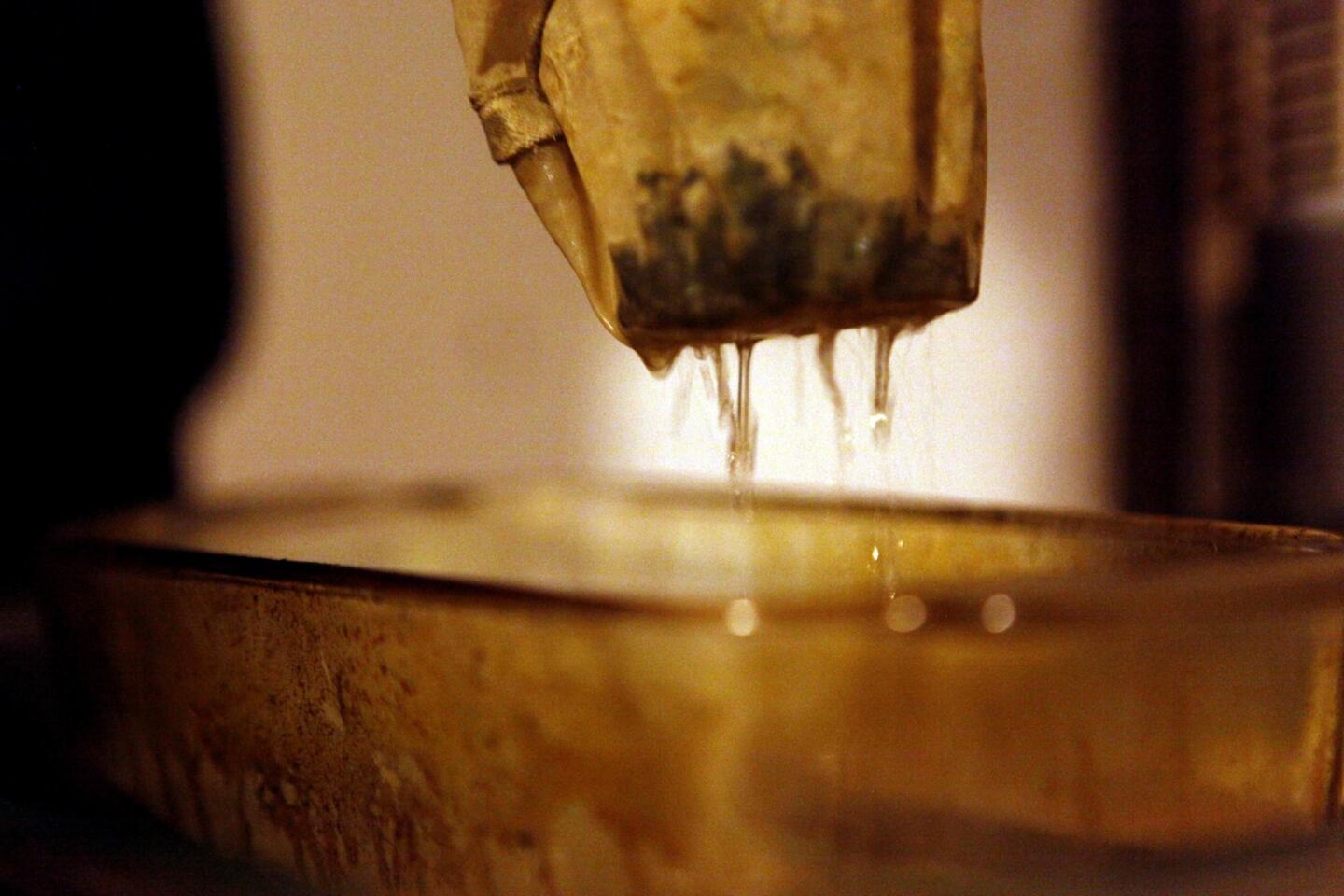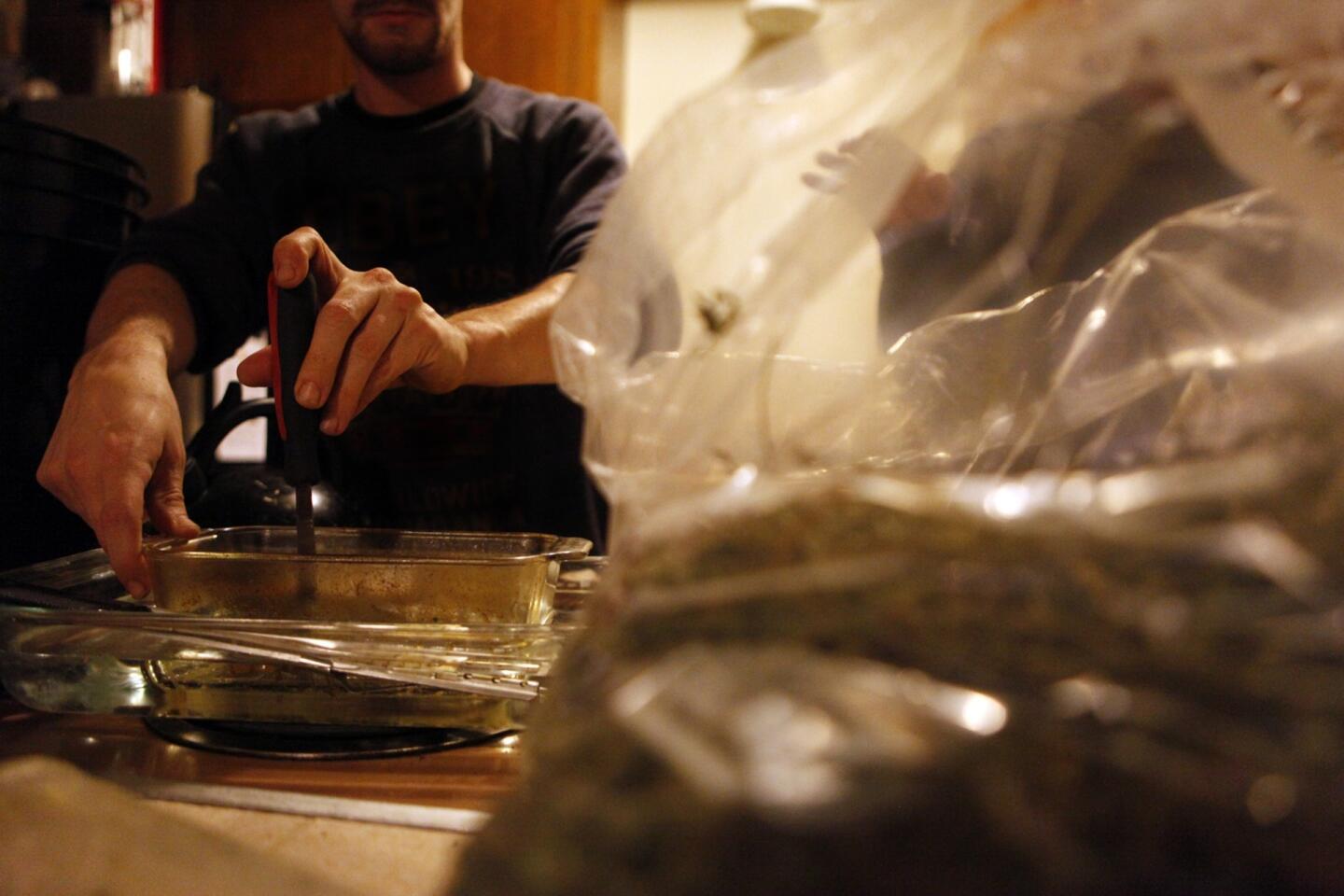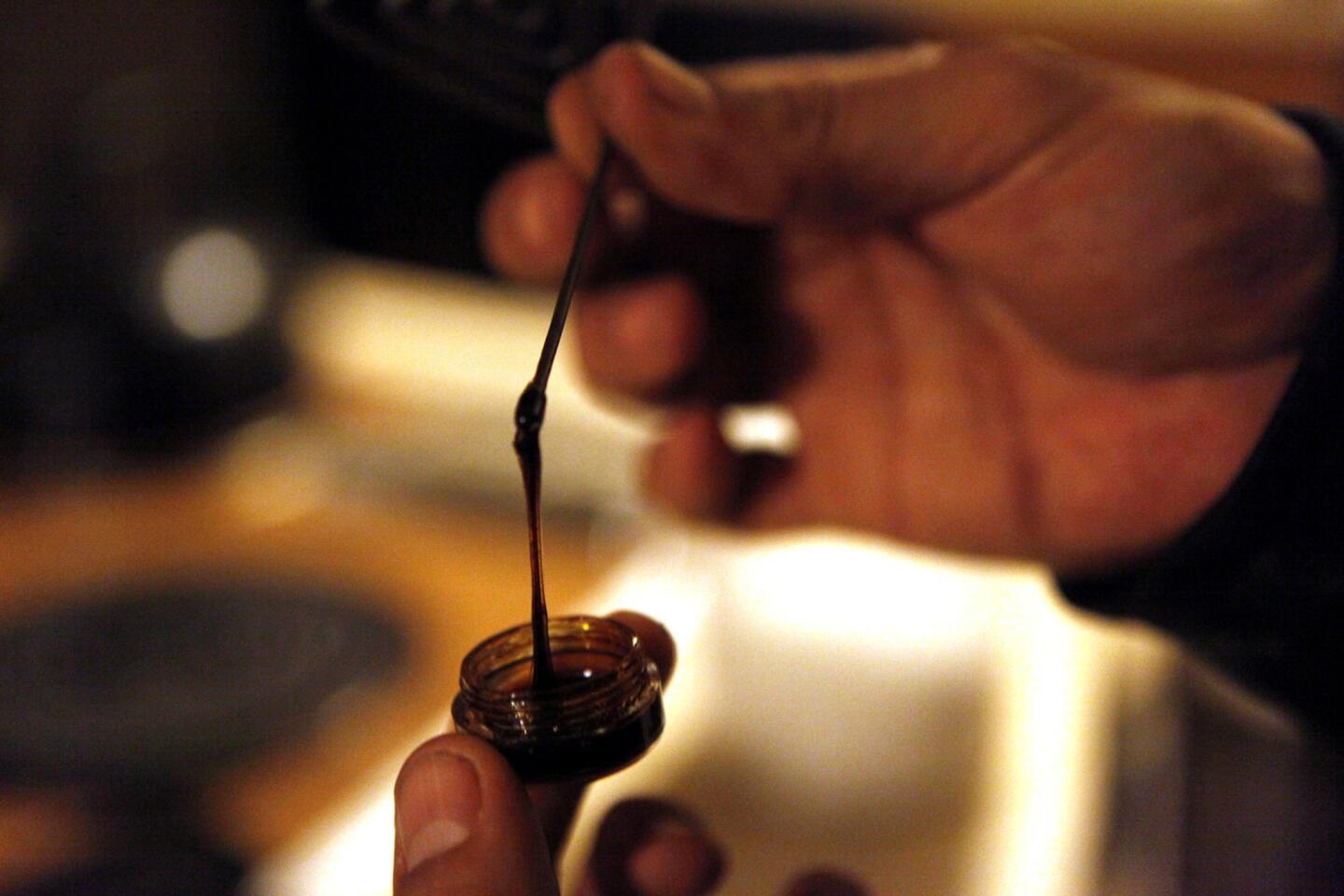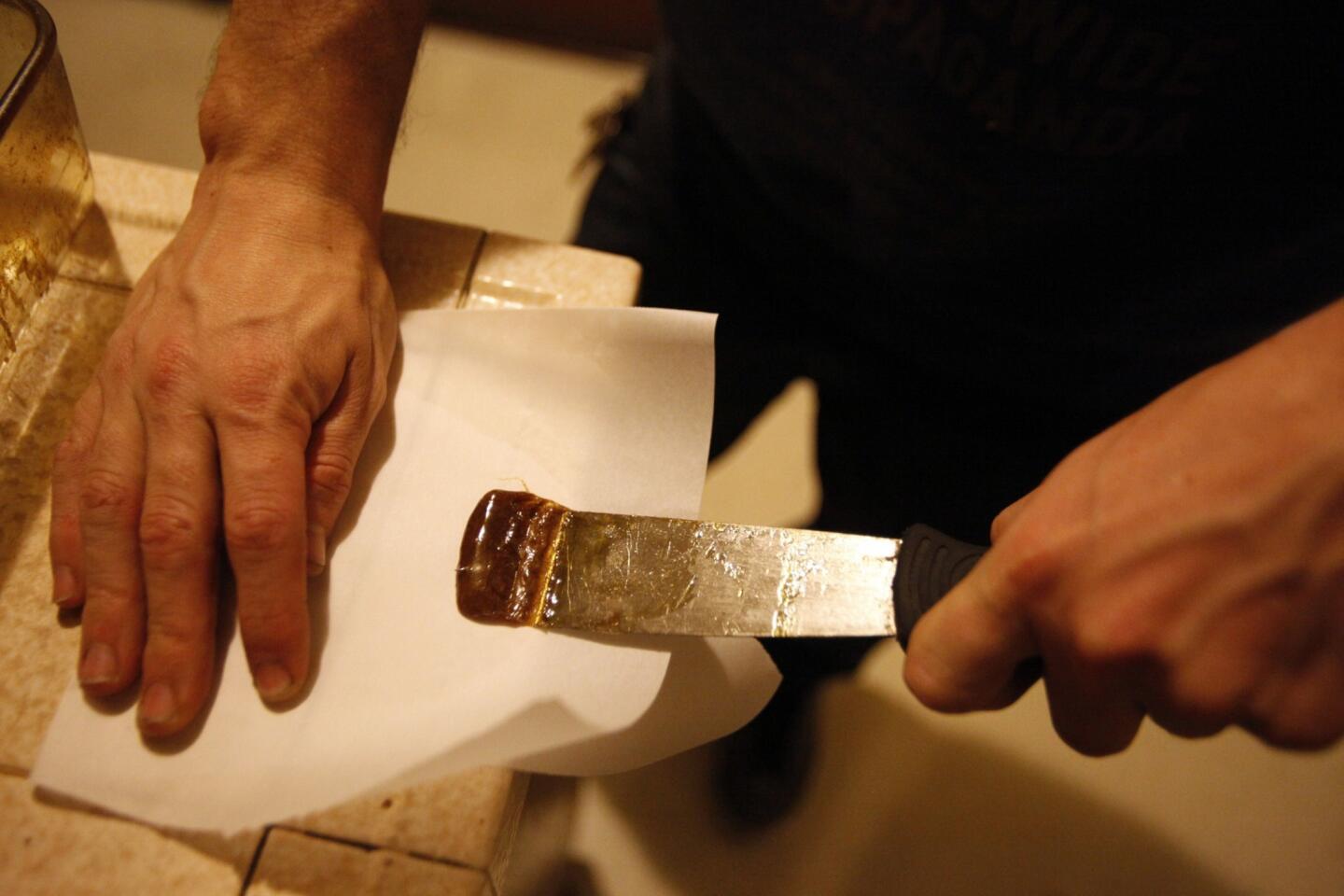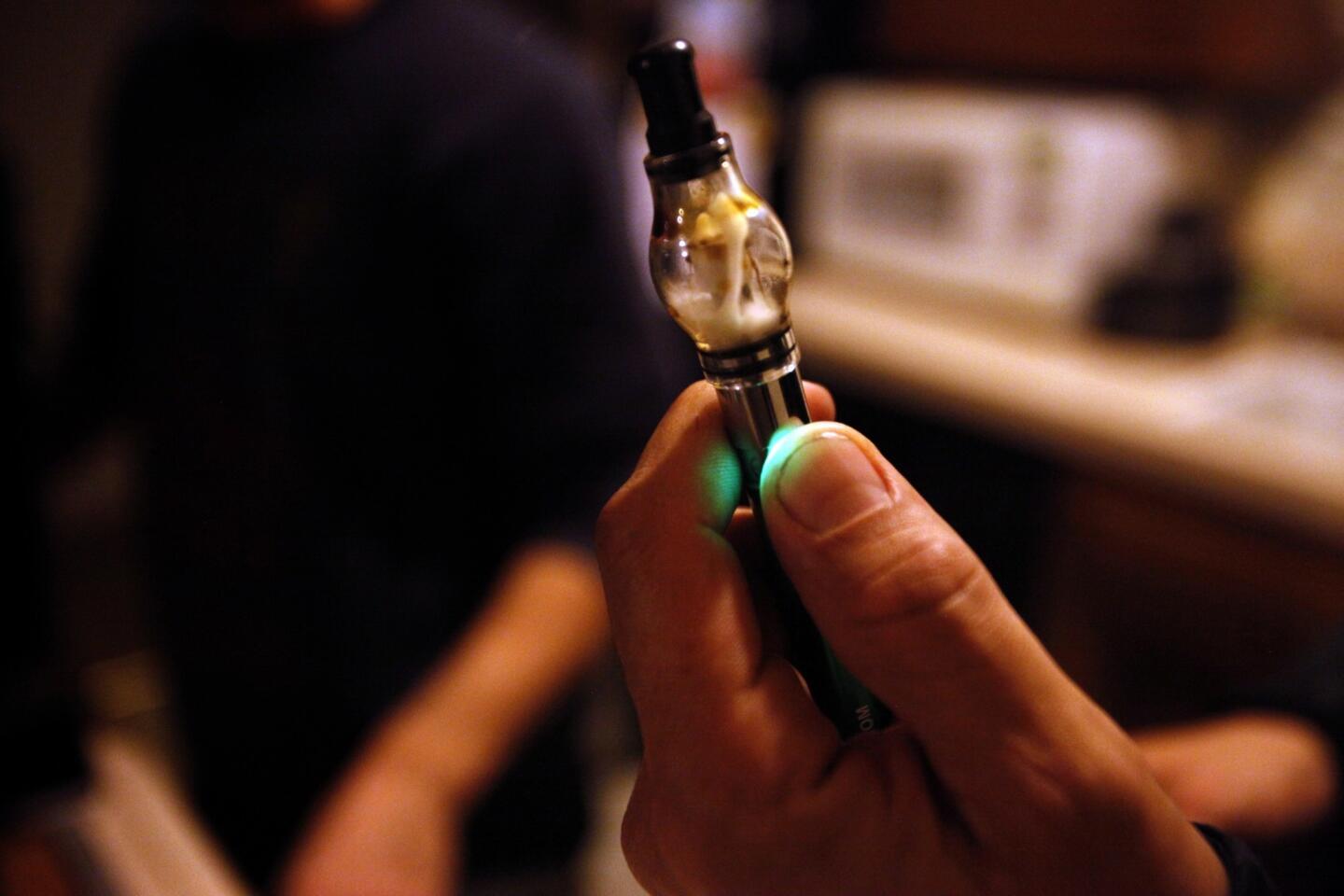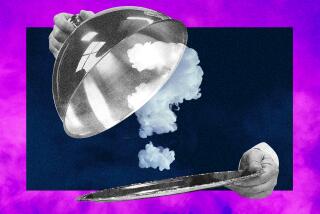Making butane hash a lethal mix in home drug labs
The “chef” hunkered over a batch of hash oil he was making in a kitchen in Redondo Beach, using a common but extremely dangerous method known as “open blasting.”
The 26-year-old meticulously stirred and heated the marijuana extract into the highest clarity, slowly producing “butane honey oil” that would be as clear and pure as amber.
This potent type of hash, also called “wax,” has taken off in the marijuana market with the rise of electronic cigarettes and other vaporizing devices. Dabs of it can be vaporized and inhaled without the smoke and pungent odor of weed, an act called “dabbing.” And they bring on a soaring high even among longtime cannabis smokers who have a strong tolerance for the drug.
But the butane used to extract the essential oil of the marijuana plant frequently blows up in the faces of the people making the wax.
In the last 14 months, at least 17 cooks and bystanders have landed in Southern California burn centers with catastrophic injuries, a toll far worse than from meth lab explosions. In Northern California, the UC Davis Health System’s burn unit treated 27 victims last year with similar injuries, and six have come in during the last two weeks. Officials suspect that the overall numbers are much higher because victims don’t disclose the illicit cause of their injuries.
The Redondo chef, who asked to withhold his name because making this type of hash is a felony, started by packing a glass pipe with discarded marijuana trimmings. He put vinyl mesh over one end and sprayed a high-pressure canister of liquid butane in the other end. The butane — better known as lighter fluid — bonded with the resin glands in the marijuana, and the solution poured into a Pyrex baking dish placed in a larger dish of nearly boiling water.
He stirred and heated it for hours, while butane slowly evaporated out of the solution to leave the purified, nonexplosive wax. All that time, the butane gas was spilling into the air.
“When butane is expelled into a room, it is odorless and colorless,” said Ashley Rosen, a Los Angeles County deputy district attorney in the major narcotics division. “It builds up in the room until it’s basically a bomb.”
Rosen first heard of a butane hash explosion in January 2013, and since then has prosecuted 26 people under a law originally designed to stop PCP and meth manufacturing.
The explosions are a growing side effect of California’s unregulated medical marijuana industry. The act of manufacturing butane hash is a criminal offense, but pot supply stores can legally sell the butane canisters, dispensaries can sell the hash and anyone with a doctor’s recommendation can buy marijuana and “vape” it.
In other words, there is a legal, lucrative market for a product that is illegal to make.
Safer forms of production exist where it is sanctioned and regulated under state law. In Colorado’s highly controlled market, state officials this month set forth rules requiring hash oil producers to follow the same procedures that manufacturers use to extract oils from plants to make canola oil, fragrances, food additives, pharmaceuticals and shampoo.
Butane extraction must be done in a closed loop system so that no vapor escapes, in rooms with powerful ventilation systems. And the facilities must comply with health and safety codes and be inspected by a certified industrial hygienist or professional engineer.
“I’m glad to see open blasting go the way of the dodo,” said Ry Prichard, a dab enthusiast in Colorado who works with a company that makes butane honey oil.
In California, once at the forefront of the legalization movement, open blasting is still the norm.
With less than $20 worth of equipment, clandestine “blasters” can do it in their garages, kitchens and backyards. There are safer and potentially legal ways for the home cook to make hash — which has been smoked in some form for millennia — but the butane-extracted variety is considered extremely potent.
The best safety measure is to work outside, but many makers don’t because discovery could bring them seven years in prison.
The Redondo chef worked next to a fan in an open window — with the curtain mostly closed so neighbors couldn’t see. He made sure he didn’t drag his feet on the carpet to generate static. He moved slowly so as not to bump something with the glass tube and cause a spark.
But he knew that none of this is fail-safe. The fan could have an internal spark.
Many explosions occur when people put their solution on hold in the refrigerator before they have boiled away the butane. The heavy vapor seeps around the wiring in the cooler and blows up.
Or people forget that a pilot light is on. Or someone lights a joint in the next room.
Dr. Peter Grossman, co-director of the Grossman Burn Centers, has treated 12 butane hash makers for catastrophic burns since late 2012. The deep flash burns covered 25% to 95% of their bodies. All of the patients required skin grafts and weeks in the hospital. Many will need years of reconstructive surgery and will never look the same again.
“We’ve seen complications that have led to lower-leg amputations,” Grossman said. “We’ve seen significant disfigurement to the face. The cost of getting a high is a lot more expensive than these people think.”
One victim in his 30s, who did not want to use his name, ran outside after his batch exploded. He ripped off his burning shirt and his nylon shorts before passing out in pain. He woke up at a Southern California burn center three weeks later with second- and third-degree burns over 51% of his body, including most of his face.
He stayed there 91 days and had 16 skin grafts. He has just started walking again, requires steroid injections every month and needs many more facial surgeries.
He thinks a static spark from his shirt ignited the butane. He had taken the same precautions as the Redondo cook — an open window, a fan and the pilot light turned off.
“You think you’re doing everything to prevent a fire,” he said. “But anything can happen. Your life is worth more than money.”
But for now, that money is luring people to take the risks. A hash maker can get a pound of marijuana “trim” — the discarded leaves cut off salable cannabis buds — for $50 to $100. The butane will cost $30. The process should net at least 20 grams of wax, which can be sold to dispensaries for well over $400.
A lot of younger pot users prefer dabbing, as well as some medical users who don’t want to inhale smoke of the burned plant. The content of the psychoactive molecule THC in wax can be more than 70%, compared to less than 20% of most marijuana.
“One of my friends came over and wanted to try wax,” said Nicole, 22, of Huntington Beach, who asked to withhold her last name. “I let her take a toke, and she was like, ‘Why did you do that to me?’ ”
The high was too intense.
But some see dabs as the future. Concentrates, in general, are big business — in marijuana-infused foods, tinctures and drinks.
“Some people don’t want to smoke because smoking is so out of vogue in general,” said Prichard, the Colorado dabber. “It’s a quick dose. I prefer it because I don’t like sitting around 10 minutes smoking a joint.”
Prichard said companies are still working to perfect the vapor device. Some mix the oil with propylene glycol to make a liquid that can be put it in plain e-cigarettes and vapor pens. But vaporizing the pure wax dabs is often done in what looks like an elaborate crack pipe.
“The torch is kind of off-putting,” Prichard said. “Kind of hard-druggy.”
More to Read
Start your day right
Sign up for Essential California for news, features and recommendations from the L.A. Times and beyond in your inbox six days a week.
You may occasionally receive promotional content from the Los Angeles Times.
